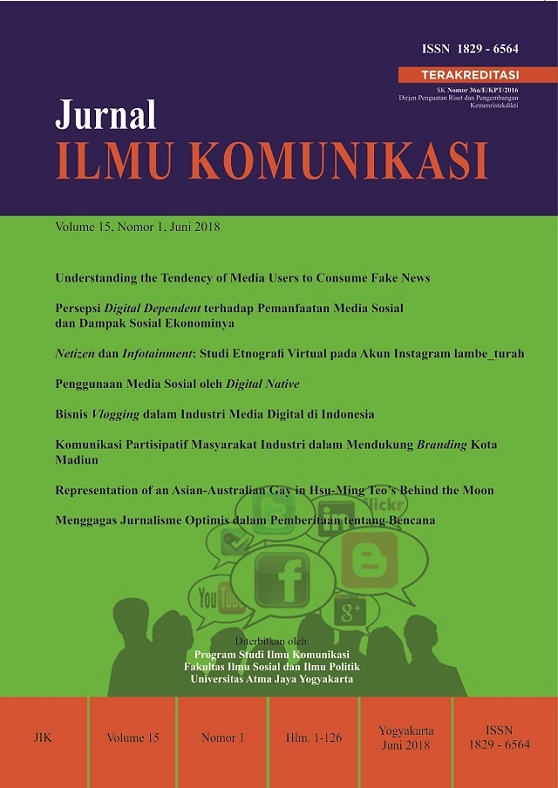<i>Representation of an Asian-Australian Gay in Hsu-Ming Teo’s Behind the Moon</i>
DOI:
https://doi.org/10.24002/jik.v15i1.1546Abstract
This paper examines how a novel Behind the Moon (2005) provides literary representations of an Asian migrant’s transforming sexual identities in Australia. Applying Morris’s concept of a “politics of surveillance,” it argues that approaches of strict control leads to an initial clash of cultures, and ultimately either to mutual transformation or a reinforcement of lack of agency/sexual difference. The analysis shows that the novel displays aspects of the cultural complexities of sexual identity formation regarding the character’s identity as an Asian homosexual in Australia. As to transformation setting, the city is a spatial metaphor for cultural confinement and surveillance.
Downloads
Published
How to Cite
Issue
Section
License
Jurnal ILMU KOMUNIKASI is an academic journal. As such, it is dedicated to the open exchange of information. For this reason, JIK is freely available to individuals and institutions. Authors who publish in Jurnal ILMU KOMUNIKASI will release their articles under the Creative Commons Attribution (BY) License. This license allows anyone to copy and redistribute the article in any medium or format as well as remix, transform, and build upon the material for any purpose, even commercially as long as they credit the authors for the original creation. For details of the rights authors grants users of their work, see the "human-readable summary" of the license, with a link to the full license. (Note that "you" refers to a user, not an author, in the summary)
 This work is licensed under a Creative Commons Attribution 4.0 International License.
This work is licensed under a Creative Commons Attribution 4.0 International License.














